50 Words or Less
The Callaway Opus SP wedges have high spin, but what’s more impressive is the spin consistency. Lower, controlled launch. Five grinds. Excellent feedback.
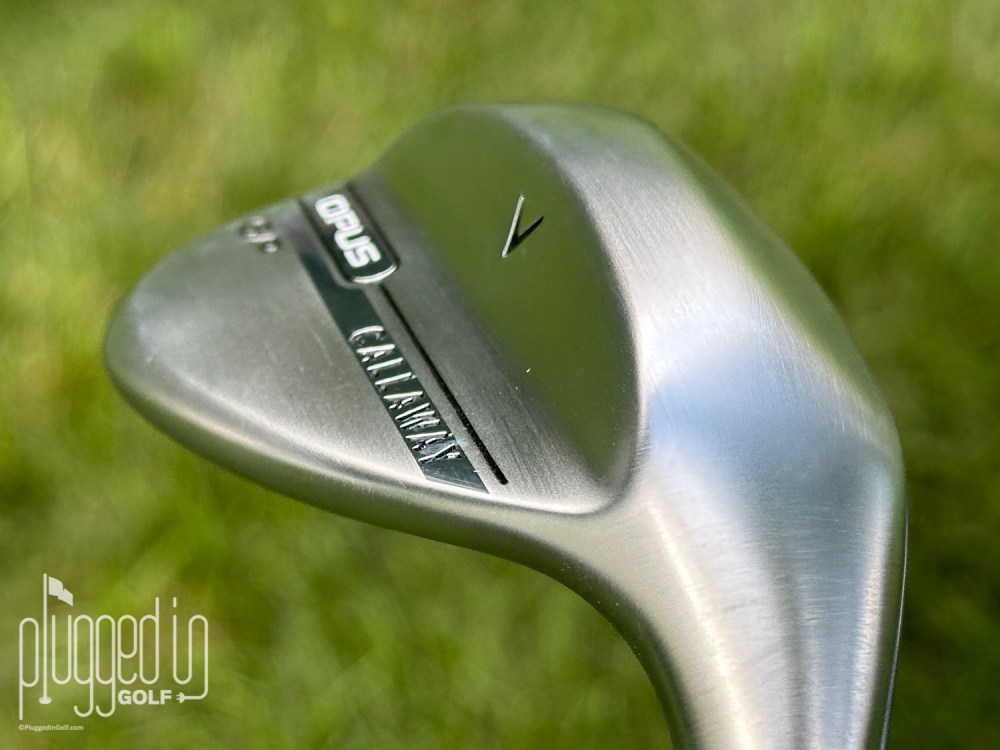
Introduction
Last year, Callaway introduced Opus, an entirely new wedge line. Focused on a higher center of gravity for more spin, it was one of the best performing wedges that we tested in 2024. For 2025, the new Callaway Opus SP wedge is aiming to go a step further thanks to “Spin Pocket Construction.” In this review, I’ll discuss whether this new technology can improve an already great wedge.

Looks
At address, the Callaway Opus wedge is fairly compact. It’s similar in size to the PING s159 [review HERE] and a bit smaller than the Vokey SM10 [review HERE].
The shape of the club varies across lofts, what Callaway calls “progressive shaping”. The lower lofted wedges have shorter heel heights for a more iron-like look. Moving to the highest lofted wedges, the face shape is more round. All of the wedges feature a rounded leading edge. The photo above shows the 54 degree wedge, which has a balanced appearance. Below, you can see the 48 degree wedge on the left and the 58 degree wedge on the right.
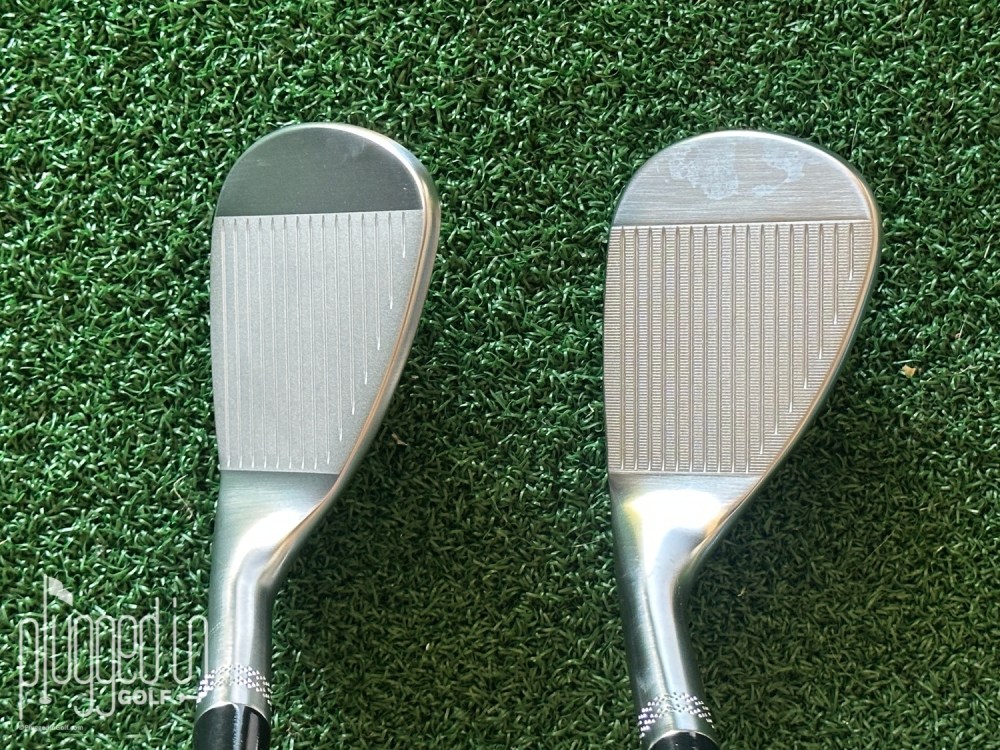
Callaway frequently comes up with clever names for their clubs and tech, but sometimes you have to make the obvious choice. The Callaway Opus SP wedge features what they call “Shape 6” because…it was the 6th prototype shape they showed their Tour staff.
In the bag, the Opus SP looks similar to the original Opus [review HERE] but with enough changes to stand apart. The “Opus” branding has been moved to the toe, opposite a simple “Callaway” engraving on the heel. A black chevron sits above the rest. I described the original Opus as “clean without being boring”, and that still applies here – this isn’t a minimalist design, but it’s not overly busy.
The Opus SP wedge is available in two finishes: Chrome and Shadow Black.
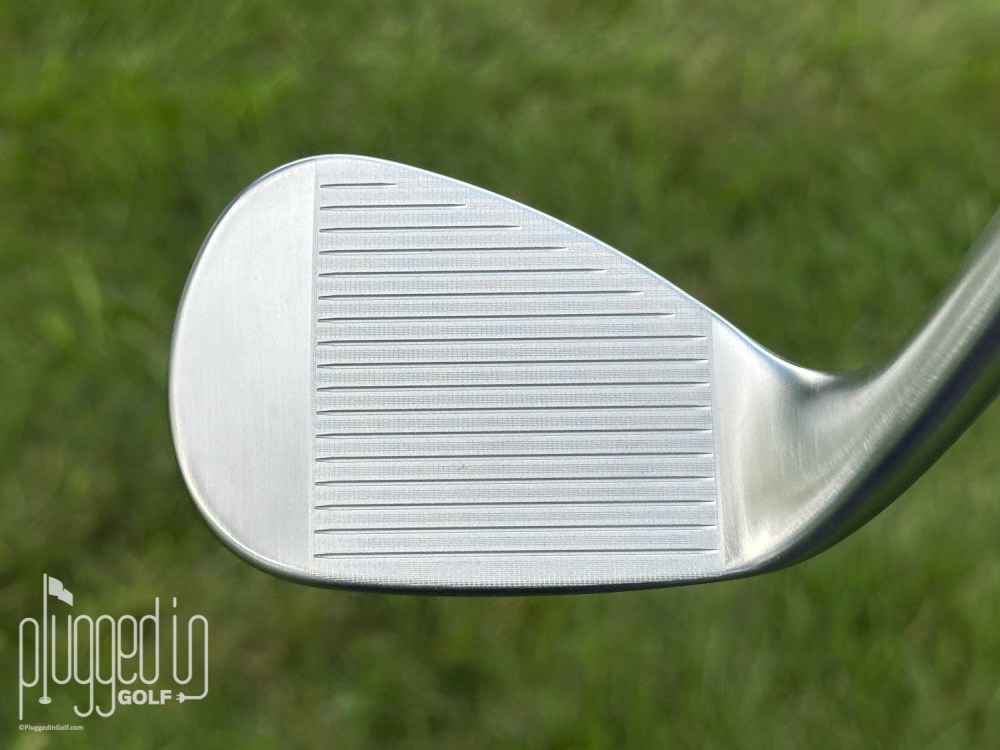
Sound & Feel
You wouldn’t know it by looking, but the Callaway Opus SP wedge features a different construction than the original Opus. Where the original was entirely cast from 8620 steel, the Opus SP combines a cast body with a face forged from 1025 carbon steel.
The result of this change is a solid feel that falls in the middle of the hard-soft spectrum. Striking a Tour-quality ball produces a full, snappy “click” that’s below average in volume. I also noted that the feedback is excellent both through the hands and ears.
Finally, my biggest question around sound and feel is how much difference the Spin Pocket would make. Only the higher lofted Callaway Opus SP wedges have this feature, so I tested the high and low lofted models side by side to see if I could sense a difference. I’m pleased to report that I could not. Kudos to Callaway.
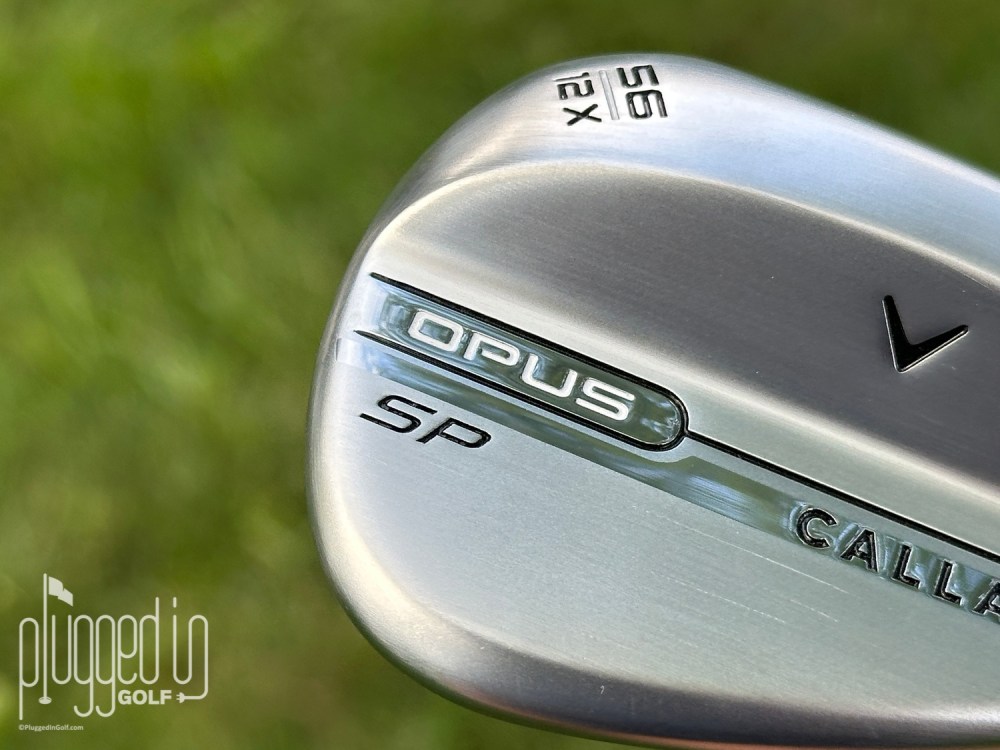
Performance
The namesake technology in the Callaway Opus SP wedge is the Spin Pocket. Present in the 54 through 60 degree wedges, this is a hollowed out portion low in the club. The purpose of removing weight in the lower portion of the club is to raise the center of gravity. A higher CG means lower launch and higher spin because of Gear Effect [explained HERE].

You might be wondering why there isn’t a Spin Pocket at every loft. For the last several years, every serious wedge maker has talked about giving each loft it’s own CG to optimize performance. The higher lofted wedges need a relatively higher CG to keep the launch angle down; lower lofted wedges can have a slightly lower CG. One assumes that Callaway was able to achieve the CG they wanted in the low lofted wedges without the Spin Pocket.

Moving from the chalkboard to the launch monitor, I found that the Callaway Opus SP wedges had some of the most consistent spin that I’ve seen this year. This was evident from the start: I was hitting the ball terribly but still producing very good spin numbers. When I started to find the center of the face, the spin went up to the high-average range, but it wasn’t a night-and-day difference from my misses. This kind of consistency is so helpful in the short game because you won’t see a slightly mishit pitch land on target only to sprint across the green.
Along with this high, consistent spin, the Callaway Opus SP wedges launch on a low, controlled trajectory, just like the original Opus and Opus Platinum [review HERE]. The higher CG won’t stop you from hitting high, soft pitches, but the stock ball flight is a degree or two lower than many other wedges.
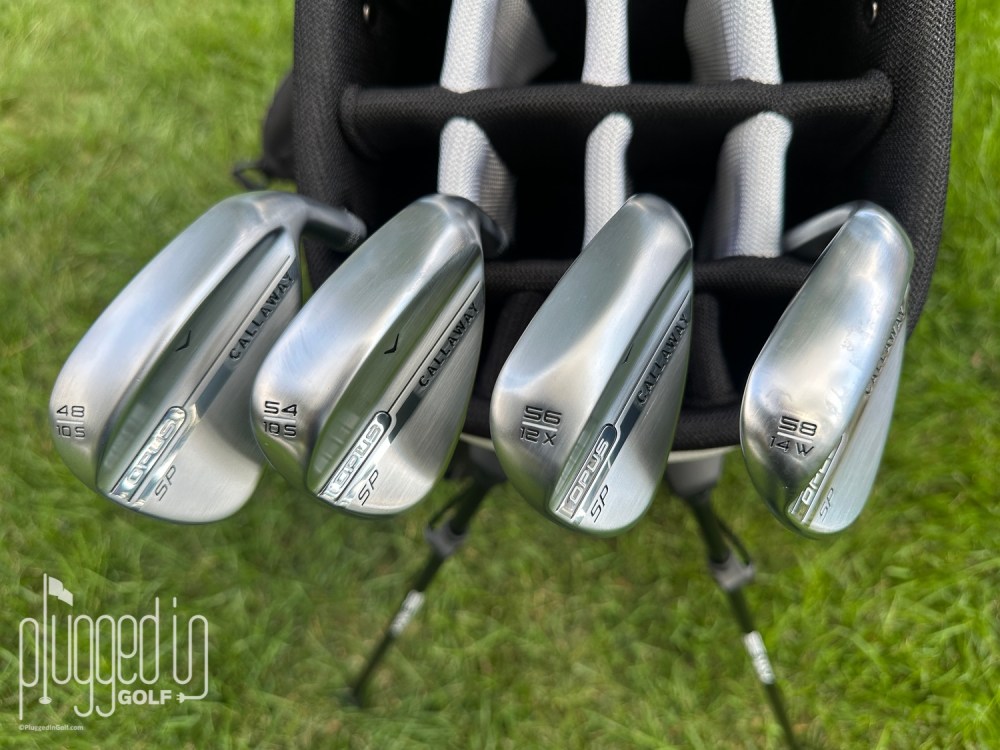
The Callaway Opus SP wedge is available with five grinds – T, C, X, S, and W – listed from least resistance to digging to most. Players who take a shallow divot or play in firm conditions will favor the T and C Grinds. Both are available in higher lofts. The X Grind is billed as the most versatile, having twelve degrees of bounce but substantial relief in toe, heel, and trailing edge. Callaway’s S Grind is offered at every loft and is designed for players who play shots with a square club face. Finally, the W Grind has the widest sole and most bounce to give maximum insurance against digging for steep players and soft conditions.
I got to test three different grinds – S, X, and W – and found a meaningful difference between them. The S Grind is suitable for virtually any condition and swing type, but the lack of heel relief causes the leading edge to rise when you open the face. It’s not impossible to play open faced shots with the S Grind, but you need to be more precise with your strike. True to its billing, the W Grind made it difficult to dig a trench, but it didn’t feel clumsy during the swing. For me, the X Grind was the best fit, offering a healthy amount of bounce with a grind that makes the sole feel thin in the turf.
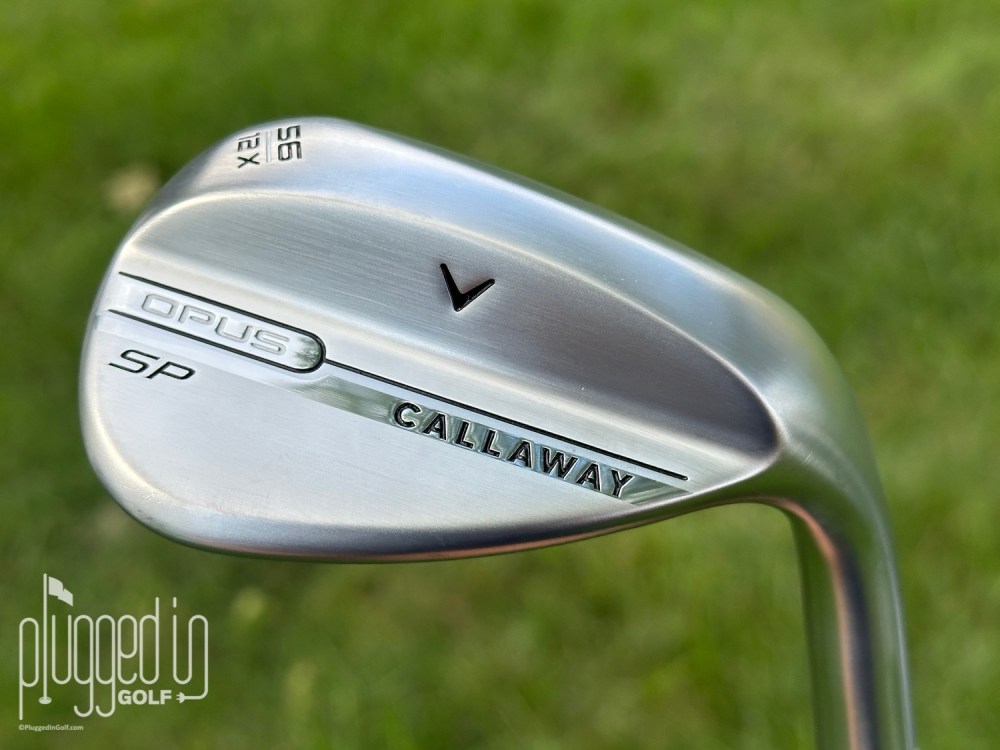
Conclusion
The Callaway Opus SP wedge is a strong follow up to the original Opus, and it should keep Callaway in the first tier for skilled short game players. With these wedges, Tour-style short game shots are easier than ever before, and the precise feedback will help you dial in your ball striking. Find the right grinds for your game, and you may start looking forward to missed greens.
Support Plugged In Golf, Shop HERE
Callaway Opus SP Wedge Price & Specs

He founded Plugged In Golf in 2013 with the goal of helping all golfers play better and enjoy the game more.
Matt lives in the northwest suburbs of Chicago with his wife and two daughters.
- Takomo Skyforger 002 Wedge Review - December 25, 2025
- PXG Lightning Tour Mid Driver Review - December 24, 2025
- Scotty Cameron Phantom 5 Putter Review - December 23, 2025

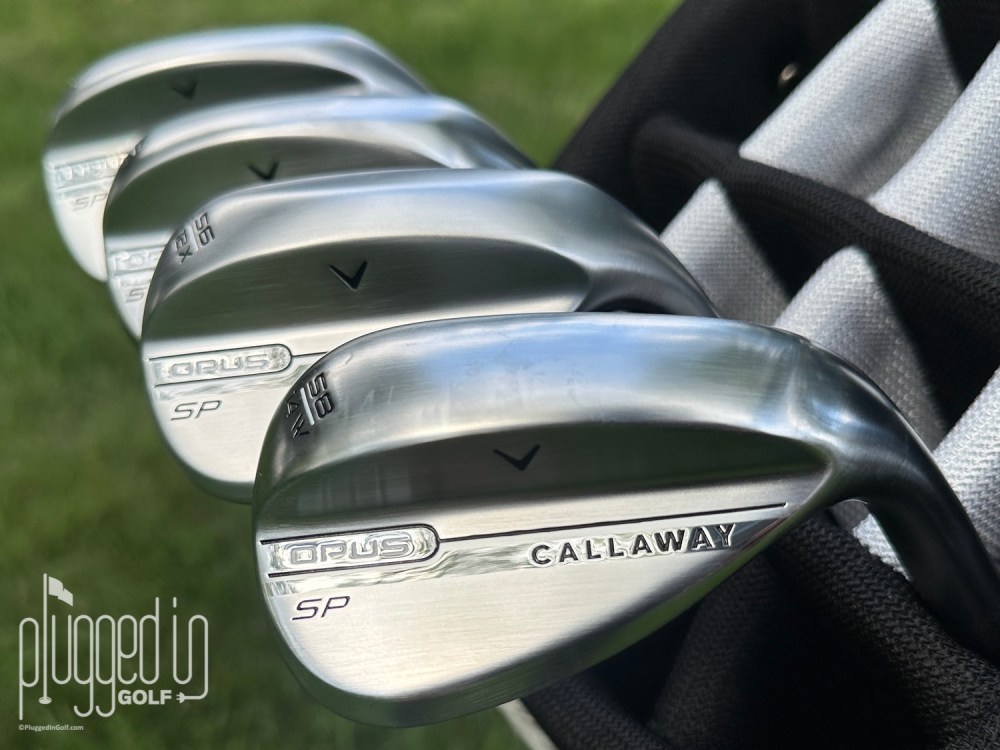


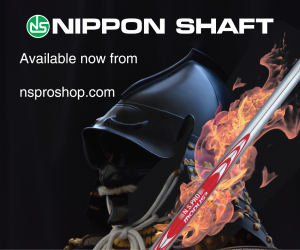




10 Comments
How does it compare to Edison’s with respect to the higher CG to lower launch angle?
Mike,
They’re similar. Edison may be a bit higher still, but they’re close.
Best,
Matt
Thanks, as always, Matt. How do the Opus SPs compare to the Mizuno Pro T-1s, in size and performance?
Krauter,
I have a full review of the T-1 here: https://pluggedingolf.com/mizuno-pro-t-1-t-3-wedge-review/
Best,
Matt
Hi, do you have your top 3/4 wedges for 2025?
I would be interested in what and why you rank the clubs!
Stephen,
We’ve never done rankings or lists of clubs because we think that cuts counter to our belief in the importance of fitting.
Best,
Matt
I appreciate the conciseness/succinctness of your writing/review style. Enjoyable read. Anywho, in terms of sound/feel around the green, how does it stack up? Is it more clicky like the SM10, soft like a T22 (I know there are softer, but I haven’t hit them), or somewhere in the middle like a Hi-Toe4. I’m assuming the harder 1025 carbon steel is to preserve the grooves for longer, but such a hard material could deliver a harder feel on touch shots. Thoughts?
Dan,
Thank you.
Feel is subjective, so I’ll point you to my reviews of the SM10: https://pluggedingolf.com/titleist-vokey-sm10-wedge-review/ and T22: https://pluggedingolf.com/mizuno-t-22-wedge-review/ for reference. With few exceptions, I do my reviews “in a vacuum”, so I don’t have much in the way of comparative notes.
Best,
Matt
Matt,
Always enjoy your reviews. In terms of forgiveness, would these be compatible for a 12-15 HC?
Thanks, Bob.
This is a tour-style wedge, so there’s no real forgiveness here. That said, I don’t think that should be an issue for a 12-15 handicap as I expect that level of player is already using this type of wedge.
Best,
Matt